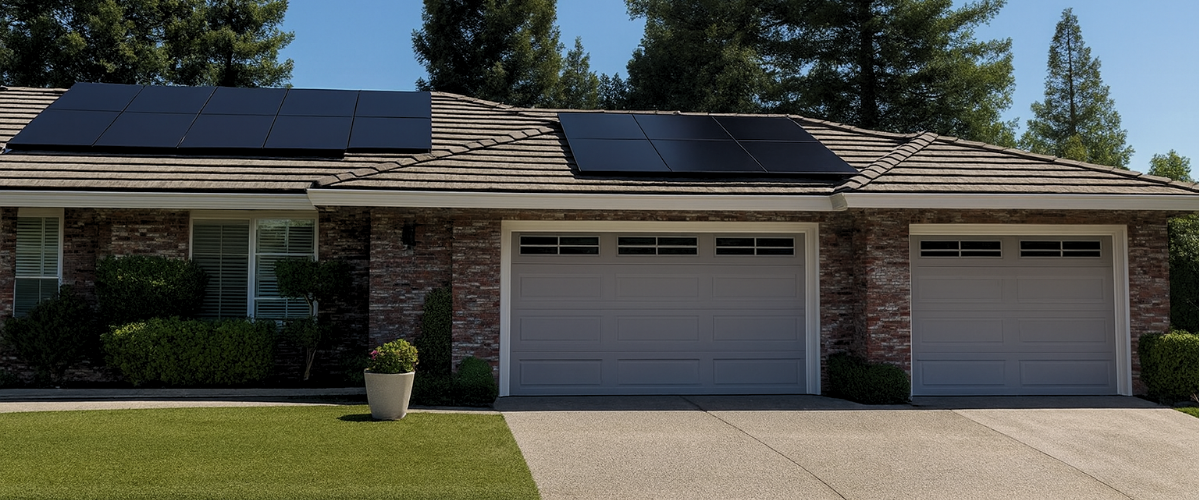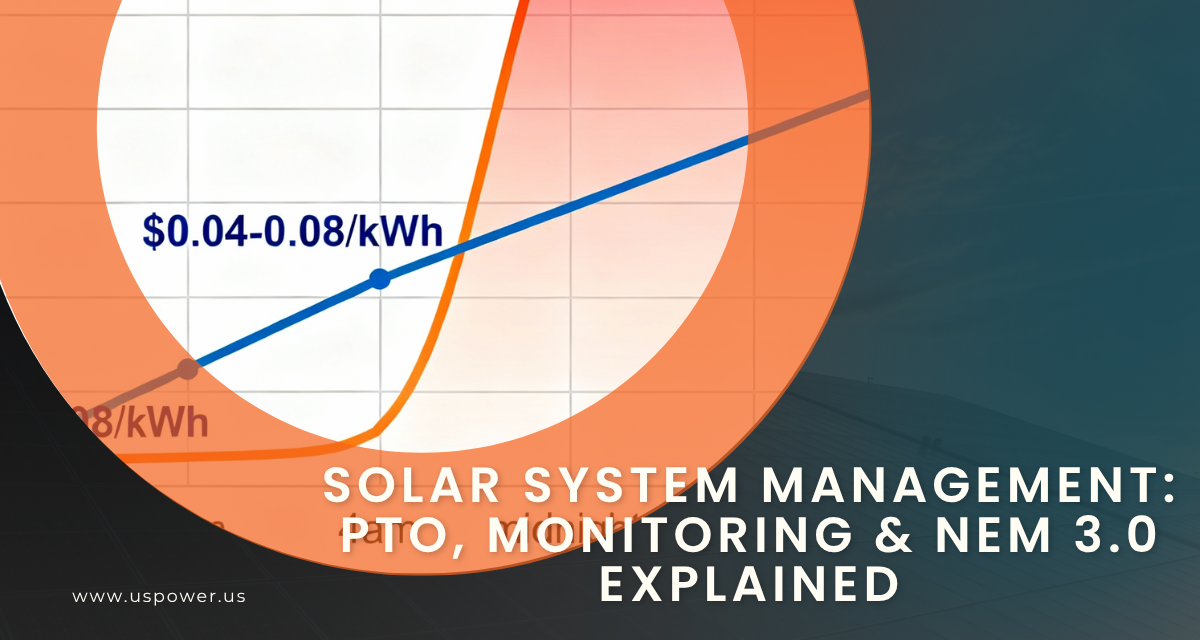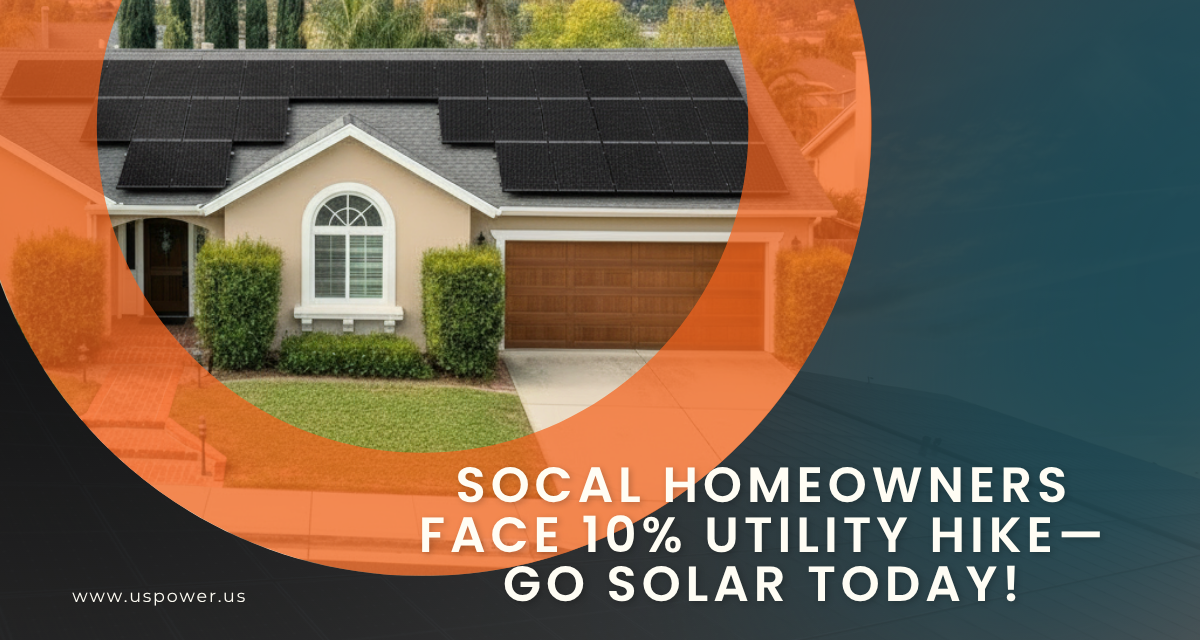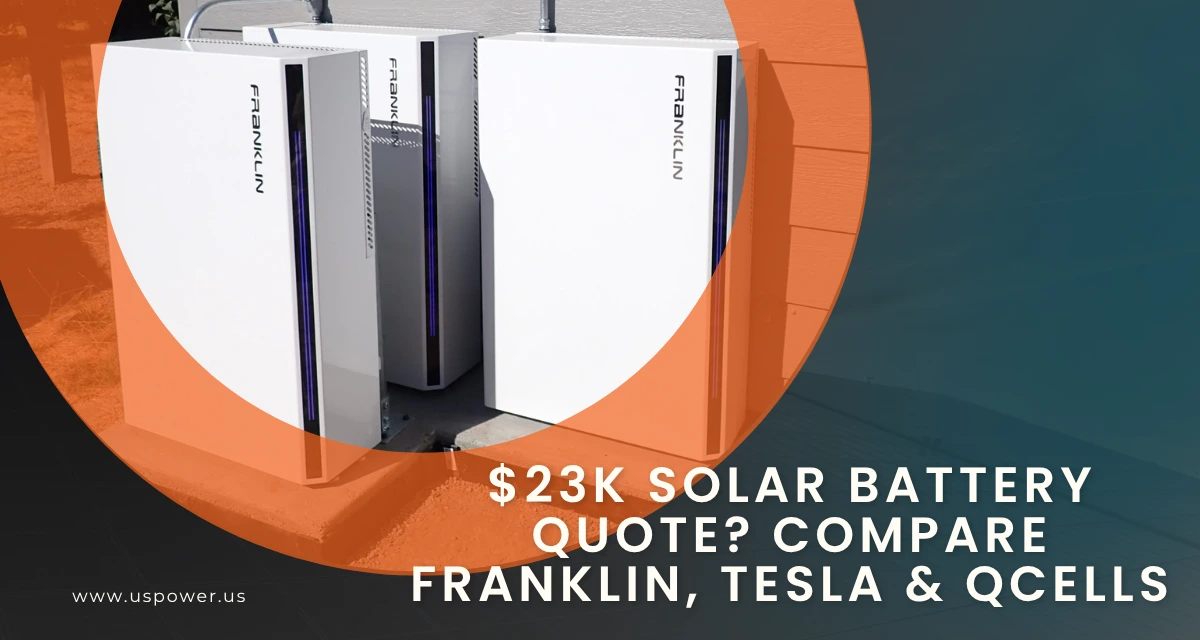How to Build a Fully Solar-Powered Home in Southern California

Solar and Roofing Advisor
Take control of rising utility bills with a complete solar + battery system. US Power and Qcells help SoCal achieve energy independence under NEM 3.0.

Electric bills in Southern California keep climbing, and more homeowners are realizing that true energy independence isn’t just about saving money—it’s about taking control. A fully solar-powered home gives you that control: generating your own electricity, storing it, and using it efficiently around the clock.
Let’s break down exactly how to do it — and why now, more than ever, it makes sense to make the switch.
Step 1: Size Your Solar Panel System the Smart Way
Every home’s energy needs are different. The right solar setup starts with understanding your past 12 months of energy use—usually visible right on your electric bill.
Your solar array’s job is to match that energy usage throughout the year, producing enough power to offset your demand even during high-usage months.
But it’s not just about panel wattage. To accurately design your system, installers must factor in:
- Your roof’s direction and tilt — South-facing panels in SoCal capture the most sunlight.
- Shade and obstacles — Trees, chimneys, or neighboring buildings can reduce energy yield.
- Local sunlight levels — Homes in Los Angeles, Lancaster, or San Bernardino enjoy some of the highest solar irradiance in the country.
By working with a trusted local installer like US Power, your system is engineered precisely for your home’s orientation and energy profile—maximizing long-term savings and return on investment.
Step 2: Understand Net Metering Under NEM 3.0
California’s new Net Energy Metering (NEM 3.0) changed how homeowners earn credit for the energy they send back to the grid.
Under the old system, you could “bank” energy at full retail value—basically, for every kilowatt-hour you exported, you got one back later. Now, utilities pay far less for excess energy, meaning battery storage is more valuable than ever.
Here’s the new reality:
- Without batteries, your excess solar power earns fewer credits.
- With batteries, you can store and use your energy at full value, avoiding peak-hour costs and keeping your home running even if the grid goes down.
That’s why most modern solar systems installed by US Power now include Qcells hybrid-ready batteries—allowing homeowners to stay ahead of utility changes while saving more long-term.
Step 3: Add Battery Storage for 24-Hour Solar Power
Think of solar panels as your generator—and batteries as your power bank. Together, they make your home self-sufficient day and night.
With a battery system, any extra solar energy generated during the day can be stored and used later when utility rates spike or during nighttime hours.
The key benefits:
✅ Self-consumption: Use your own clean energy before buying from the grid.
✅ Backup power: Stay powered through outages and emergencies.
✅ Peak-rate avoidance: Run your home from stored energy during expensive “Time of Use” hours.
Homeowners across Orange County, San Bernardino, and Los Angeles are seeing savings of 20–40% by pairing Qcells panels with battery storage. It’s not just an upgrade—it’s the foundation of a reliable, future-proof energy system.
Step 4: Add Smart Load Control and Home Energy Management
The final piece of a truly solar-powered home is intelligent load control—technology that decides when and how your home uses energy.
This system monitors your solar production, battery levels, and time-of-use rates, then automatically prioritizes essential loads.
For example:
- Running your air conditioning during solar hours.
- Charging your EV or powering heavy appliances at night using stored energy.
- Reducing grid use during high-cost hours.
With smart load control, you don’t just generate solar energy—you orchestrate it. And when it’s combined with Qcells’ high-efficiency equipment and US Power’s local expertise, homeowners can see full energy independence with optimized comfort and cost control.
Why Southern California Homeowners Are Switching Now
This season, SoCal homeowners are feeling the pinch:
- Utility rates are hitting record highs.
- NEM 3.0 makes non-battery solar less efficient.
- Power outages and grid instability are more common than ever.
The good news? The Federal Solar Investment Tax Credit (ITC) still covers 30% of your system cost, and with Qcells’ U.S.-made panels, you also qualify for domestic manufacturing bonuses.
That’s why thousands of homeowners are upgrading to solar + storage systems—locking in energy security, avoiding volatile rates, and building homes that practically power themselves.
Get Your Custom Solar Design from US Power
If you’re serious about lowering bills and achieving energy independence, now is the best time to get a custom solar and battery design tailored to your home.
✅ Compare your current usage
✅ Get a side-by-side production forecast
✅ See how much you’ll save under NEM 3.0
✅ Learn if your home qualifies for Qcells’ latest high-efficiency modules
Request your free system design and quote today with US Power!
Turn your Southern California home into a self-sufficient solar-powered powerhouse—built to save, perform, and last for decades.
Artículos relacionados
Nuestros blogs relacionados
Before receiving PTO, your utility has no obligation to track export credits or pay y
Avoid SCE’s 10% rate hike with solar savings with US Power and Qcells Technology.
Is $23K a fair price for a home battery? compare quotes and incentives in SoCal.
Nuestros socios de marcas de energía solar y techos








Empoderamos a las comunidades y las empresas para que aprovechen las energías limpias y renovables energía solar soluciones que impulsan el crecimiento sostenible.
Derechos de autor © 2025 US POWER | Energía solar y techosUS Power - Axia by QCells. All Rights Reserved.
La privacidad es importante para nosotros, por lo que tiene la opción de deshabilitar ciertos tipos de almacenamiento que pueden no ser necesarios para el funcionamiento básico del sitio web. El bloqueo de categorías puede afectar a su experiencia en el sitio web.
Imprescindible
Estos elementos son necesarios para habilitar la funcionalidad básica del sitio web.
Personalización
Estos elementos permiten que el sitio web recuerde las elecciones que ha realizado (como el nombre de usuario, el idioma o la región en la que se encuentra) y proporcionan funciones mejoradas y más personales.
Mercadeo
Estos artículos se utilizan para ofrecer publicidad que sea más relevante para usted y sus intereses.
Analítica
Estos elementos ayudan al operador del sitio web a comprender cómo funciona su sitio web, cómo interactúan los visitantes con el sitio y si puede haber problemas técnicos.
Nosotros y nuestros socios externos utilizamos cookies y otras tecnologías para mejorar y rastrear su experiencia en este sitio, realizar análisis y personalizar el marketing para usted. Al usar el sitio, aceptas que usemos estas tecnologías, incluido el registro y el monitoreo de tus interacciones con el sitio.
¡Obtenga una estimación solar instantánea usando el satélite!










